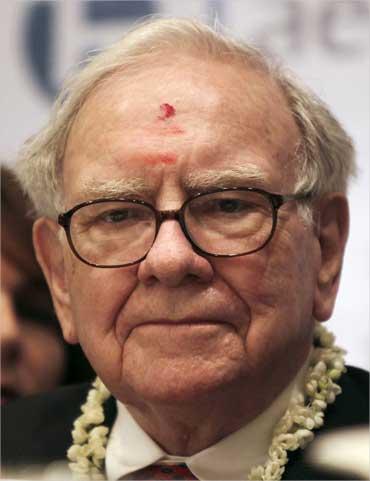Warren Edward Buffett was born upon August 30, 1930, to his mother Leila and father Howard, a stockbroker-turned-Congressman. The 2nd earliest, he had 2 sisters and showed a fantastic ability for both cash and service at a very early age. Associates recount his astonishing ability to calculate columns of numbers off the top of his heada task Warren still amazes service colleagues with today.
While other children his age were playing hopscotch and jacks, Warren was earning money. 5 years later on, Buffett took his first step into the world of high financing. At eleven years of ages, he bought three shares of Cities Service Preferred at $38 per share for both himself and his older sister, Doris.
A scared but durable Warren held his shares till they rebounded to $40. He quickly sold thema error he would soon come to regret. Cities Service soared to $200. The experience taught him among the basic lessons of investing: Persistence is a virtue. In 1947, Warren Buffett graduated from high school when he was 17 years old.
81 in 2000). His father had other strategies and prompted his child to go to the Wharton Organization School at the University of Pennsylvania. Buffett only stayed two years, complaining that he knew more than his professors. He returned home to Omaha and transferred to the University of Nebraska-Lincoln. Despite working full-time, he managed to graduate in just 3 years.
He was finally persuaded to apply to Harvard Company School, which rejected him as "too young." Slighted, Warren then applifsafeed to Columbia, where famous financiers Ben Graham and David Dodd taughtan experience that would forever alter his life. Ben Graham had actually become popular during the 1920s. At a time when the rest of the world was approaching the financial investment arena as if it were a huge game of live roulette, Graham looked for stocks that were so inexpensive they were almost entirely devoid of threat.
The stock was trading at $65 a share, however after studying the balance sheet, Graham realized that the company had bond holdings worth $95 for every share. The value financier attempted to encourage management to sell the portfolio, but they refused. Soon afterwards, he waged a proxy war and protected an area on the Board of Directors.

When he was 40 years of ages, Ben Graham published "Security Analysis," one of the most significant works ever penned on the stock exchange. At the time, it was dangerous. (The Dow Jones had fallen from 381. 17 to 41. 22 over the course of 3 to four brief years following the crash of 1929).
Using intrinsic value, financiers could choose what a business was worth and make investment decisions appropriately. His subsequent book, "The Intelligent Investor," which Buffett celebrates as "the best book on investing ever composed," presented the world to Mr. Market, a financial investment analogy. Through his easy yet profound financial investment principles, Ben Graham ended up being an idyllic figure to the twenty-one-year-old Warren Buffett.
He hopped a train to Washington, D.C. one Saturday early morning to discover the head office. When he got there, the doors were locked. Not to be stopped, Buffett relentlessly pounded on the door until a janitor pertained to open it for him. He asked if there was anybody in the structure.
It turns out that there was a man still working on the sixth floor. Warren was escorted as much as satisfy him and right away started asking him questions about the company and its business practices; a discussion that stretched on for four hours. The male was none other than Lorimer Davidson, the Get more info Financial Vice President.